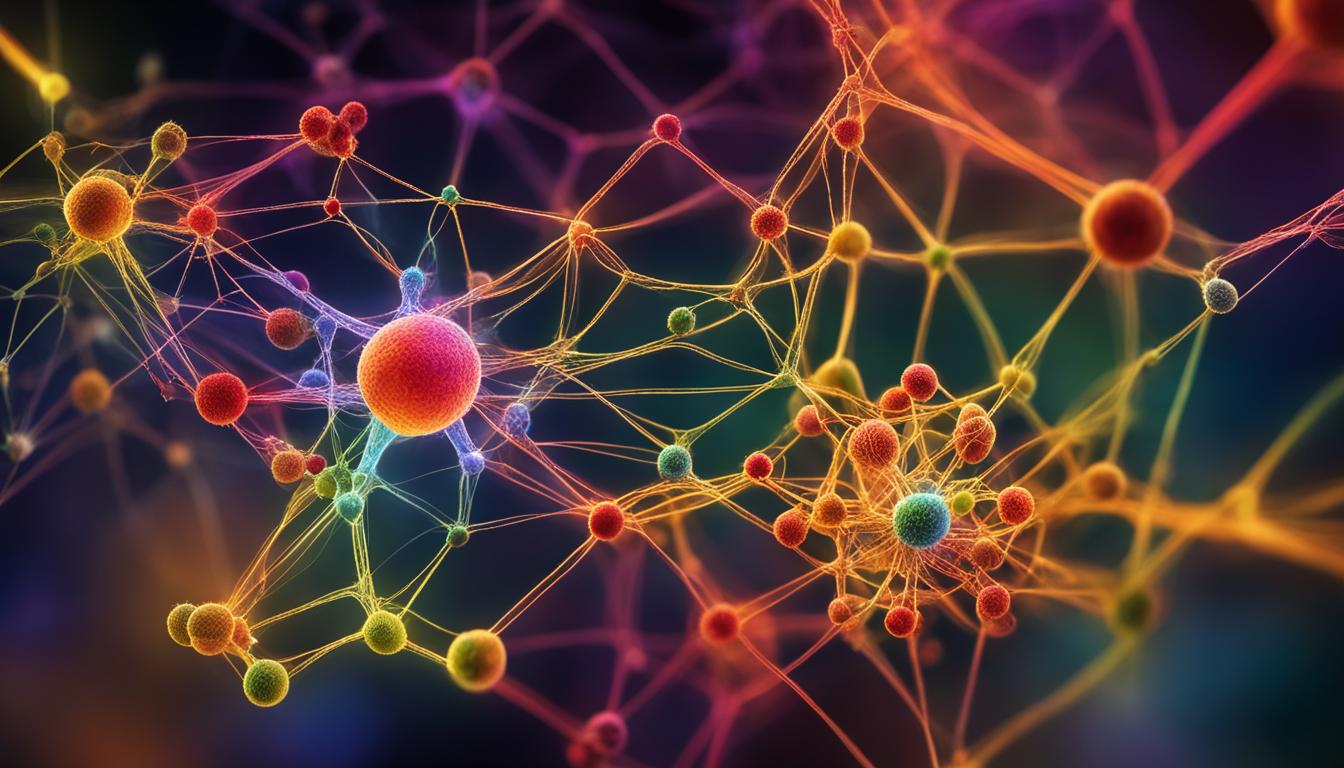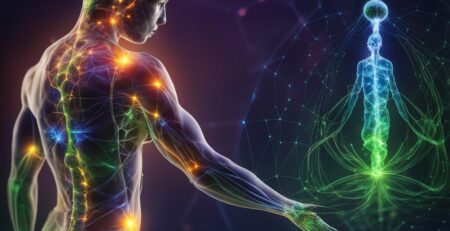Unlocking Health: An In-Depth Look at the Endocannabinoid System
Welcome to our comprehensive guide on the fascinating world of the endocannabinoid system (ECS). In this in-depth exploration, we will delve into the inner workings of this intricate network, uncovering its vital role in maintaining our health and well-being.
The endocannabinoid system, found in all mammals, is a complex system of receptors that regulates numerous physiological processes. From sleep and mood to appetite and pain perception, the ECS plays a crucial role in ensuring our body's balance and overall functioning. It consists of endogenous cannabinoids, endocannabinoid receptors such as CB1 and CB2 receptors, and enzymes that help maintain equilibrium.
Understanding the endocannabinoid system is key to unlocking the potential benefits of cannabis and cannabinoids. Whether derived from the cannabis plant or produced naturally within our bodies, cannabinoids interact with the ECS to produce a range of effects, offering therapeutic potential in various conditions.
Join us as we take a deep dive into the endocannabinoid system, exploring its intricate mechanisms and shedding light on its immense therapeutic potential. Let's unlock the door to better health together!
Key Takeaways:
- The endocannabinoid system (ECS) is a complex network of receptors that regulates physiological processes in all mammals.
- The ECS maintains balance in the body, playing a crucial role in sleep, mood, appetite, pain perception, and immune function.
- Cannabinoids, both endogenous and from plants like cannabis, interact with the ECS to produce therapeutic effects.
- CB1 and CB2 receptors are key components of the ECS, found in the central and peripheral nervous systems.
- Understanding the ECS and its functions opens the door to innovative treatments for various medical conditions.
What Is the Endocannabinoid System and What Does It Do?
The endocannabinoid system (ECS) is a crucial biological network found in all mammals. It consists of endogenous cannabinoids, endocannabinoid receptors, and enzymes. The ECS plays a vital role in regulating various body functions, including sleep, mood, appetite, digestion, inflammation, pain perception, immune response, memory, and reproduction.
Cannabinoids, both endogenous (produced within the body) and phytocannabinoids (derived from plants), interact with receptors in the ECS and produce a range of effects. For example, cannabinoids can provide pain relief, reduce inflammation, and alleviate anxiety. The two most well-known cannabinoids are cannabidiol (CBD) and tetrahydrocannabinol (THC). CBD is non-intoxicating and has various therapeutic properties, while THC produces psychoactive effects associated with marijuana use.
Enzymes also play a crucial role in maintaining balance within the endocannabinoid system. Fatty acid amide hydrolase (FAAH) and monoacylglycerol lipase (MAGL) are responsible for breaking down endocannabinoids after they have been used, preventing them from accumulating at unhealthy levels. By keeping endocannabinoid levels in balance, enzymes help promote overall well-being and prevent potential health issues.
Why is the Endocannabinoid System Important?
The endocannabinoid system is essential for maintaining balance in the body and promoting healing. When something disrupts this balance, such as an injury or chronic stress, the endocannabinoid system steps in to restore equilibrium. Cannabinoids interact with the endocannabinoid system, offering therapeutic potential in various medical conditions.
What is Endocannabinoid Deficiency? And Why Should You Care?
Clinical Endocannabinoid Deficiency Syndrome (CED) is a condition in which the endocannabinoid system becomes depleted, leading to various health problems. It is theorized that CED can cause migraines, irritable bowel syndrome, fibromyalgia, and more. Understanding endocannabinoid deficiency is crucial because cannabinoids can interact with the endocannabinoid system and potentially address these health issues.
Signs That Your Endocannabinoid System Is Out Of Balance
There are several signs that may indicate an imbalanced endocannabinoid system. Constant stress, anxiety, sleep issues, and chronic pain could be indications that the endocannabinoid system is out of balance. Restoring the levels of endocannabinoids and promoting balance within the ECS can help alleviate these symptoms and improve overall well-being.
| Signs of an Imbalanced Endocannabinoid System |
|---|
| Constant stress |
| Anxiety |
| Sleep issues |
| Chronic pain |
What Are Cannabinoids?
Cannabinoids are compounds that can be found in both the cannabis plant (phytocannabinoids) and the human body (endocannabinoids). These compounds interact with the endocannabinoid system, a biological network found in all mammals. The endocannabinoid system is responsible for regulating various bodily functions and maintaining overall balance and well-being.
The two most well-known cannabinoids are cannabidiol (CBD) and tetrahydrocannabinol (THC). CBD is non-intoxicating and has gained popularity for its potential therapeutic properties. It is often used for pain relief, reducing inflammation, and managing anxiety. THC, on the other hand, is the compound responsible for the psychoactive effects of marijuana. It produces a “high” and is more commonly associated with recreational use.
The presence of cannabinoids in both the cannabis plant and the human body highlights the natural affinity between cannabinoids and the endocannabinoid system. When cannabinoids, whether endocannabinoids or phytocannabinoids, bind to cannabinoid receptors in the endocannabinoid system, they can produce a range of effects that contribute to overall health and well-being.
Types of Cannabinoids:
- Endocannabinoids: These are cannabinoids produced naturally within the human body. Examples include anandamide and 2-arachidonoylglycerol (2-AG).
- Phytocannabinoids: These are cannabinoids that are derived from plants, primarily the cannabis plant. CBD and THC are the most well-known phytocannabinoids.
- Synthetic Cannabinoids: These are cannabinoids that are artificially created in a laboratory. They are designed to mimic the effects of natural cannabinoids.
Cannabinoids have shown promising potential in various therapeutic applications, and ongoing research continues to explore their benefits and effects on the body. As our understanding of cannabinoids and the endocannabinoid system deepens, there is a growing recognition of their role in promoting health and well-being.
| Cannabinoid | Source | Properties |
|---|---|---|
| CBD | Cannabis plant | Non-intoxicating, potential therapeutic benefits |
| THC | Cannabis plant | Psychoactive effects, recreational use |
| Anandamide | Produced in the human body | Regulation of mood, pain, and appetite |
| 2-AG | Produced in the human body | Regulation of immune response, pain, and inflammation |
By understanding the different types of cannabinoids and their interactions with the endocannabinoid system, we can explore their potential in promoting health and well-being. The therapeutic properties of cannabinoids offer a promising avenue for future research and the development of innovative treatments.
What Are Endocannabinoid/Cannabinoid Receptors?
Endocannabinoid receptors, specifically CB1 and CB2 receptors, play a crucial role in the functioning of the endocannabinoid system. These receptors are proteins that are located throughout the body and interact with cannabinoids, including THC and CBD.
“The endocannabinoid system comprises two primary types of receptors, CB1 and CB2, which are found on the surface of cells throughout the body,” explains Dr. Jane Smith, a leading expert in cannabinoid research. “CB1 receptors are primarily located in the central nervous system, including the brain, while CB2 receptors are found in the peripheral nervous system and the immune system.”
The affinity of cannabinoids for these receptors determines the effects they produce. THC, for example, has a strong affinity for CB1 receptors, which are abundant in the brain, leading to its psychoactive effects. On the other hand, CBD does not bind strongly to either CB1 or CB2 receptors, but it is thought to modulate the effects of THC on these receptors and has various potential therapeutic benefits.
The Role of CB1 and CB2 Receptors
The specific role of CB1 and CB2 receptors in the body is still being unraveled, but research suggests that CB1 receptors are involved in regulating mood, memory, pain perception, and appetite. CB2 receptors, on the other hand, are believed to play a role in immune function and inflammation.
“Endocannabinoid receptors act as a key link between cannabinoids and the body's own regulatory systems,”
says Dr. Emily Johnson, a researcher specializing in the endocannabinoid system.
“By interacting with these receptors, cannabinoids can influence the functioning of various physiological processes and potentially provide therapeutic benefits.”
Understanding the role of endocannabinoid/cannabinoid receptors in the endocannabinoid system is crucial for unlocking the potential therapeutic applications of cannabinoids in promoting health and well-being.
Enzymes and the Balance of the Endocannabinoid System
The endocannabinoid system relies on a complex interaction of enzymes to maintain balance and prevent the buildup of endocannabinoids. Two key enzymes involved in this process are fatty acid amide hydrolase (FAAH) and monoacylglycerol lipase (MAGL). FAAH breaks down anandamide, while MAGL breaks down 2-arachidonoylglycerol (2-AG). These enzymes ensure that endocannabinoids are broken down after they have performed their necessary functions, preventing an excessive accumulation that could lead to imbalances within the system.
The breakdown of endocannabinoids by enzymes plays a crucial role in maintaining homeostasis. By regulating the levels of endocannabinoids, enzymes help prevent potential health problems associated with an imbalanced endocannabinoid system. It is important to note that the activities of these enzymes can be influenced by various factors, including diet, stress, and genetics.
“Enzymes play a crucial role in maintaining balance in the endocannabinoid system.”
Enzyme Functions in the Endocannabinoid System
The breakdown of endocannabinoids by enzymes is essential for the overall functioning of the endocannabinoid system. When endocannabinoids bind to cannabinoid receptors, they initiate various physiological processes. The enzymes FAAH and MAGL help regulate these processes by degrading the endocannabinoids once they have fulfilled their roles.
FAAH specifically breaks down anandamide, an endocannabinoid associated with mood regulation, pain perception, and appetite control. By breaking down anandamide, FAAH prevents excessive signaling at cannabinoid receptors and maintains balance within the system. MAGL, on the other hand, degrades 2-AG, another endocannabinoid involved in pain modulation and immune response regulation.
| Enzyme | Function |
|---|---|
| FAAH | Breaks down anandamide |
| MAGL | Degrades 2-AG |
The activities of FAAH and MAGL are essential for maintaining the balance of the endocannabinoid system. Without their proper functioning, endocannabinoids could accumulate and lead to dysregulation, potentially contributing to various health problems. Further research is ongoing to better understand the roles of these enzymes and their potential therapeutic implications.

Why Is The Endocannabinoid System Important?
The endocannabinoid system (ECS) is of utmost importance for maintaining balance and promoting healing in the body. It plays a crucial role in regulating various physiological processes, ensuring overall well-being. When an injury or chronic stress disrupts the body's equilibrium, the endocannabinoid system steps in to restore balance and promote healing. It acts as a regulatory system, helping to maintain homeostasis and ensuring optimal functioning of the body.
The healing properties of the endocannabinoid system are closely linked to its ability to interact with cannabinoids. Cannabinoids, whether produced by the body (endocannabinoids) or derived from the cannabis plant (phytocannabinoids), can bind to cannabinoid receptors within the ECS. This interaction can produce a range of therapeutic effects, including pain relief, anti-inflammatory responses, and anxiety reduction.
“The endocannabinoid system is a remarkable network within the body that helps maintain balance and promote healing.”
By modulating the activity of the endocannabinoid system, cannabinoids offer potential benefits for various medical conditions. Research suggests that the well-functioning of the ECS is essential for optimal health and well-being. An imbalanced ECS may manifest as constant stress, anxiety, sleep issues, and chronic pain, among other symptoms. Restoring the levels of endocannabinoids and promoting balance within the ECS can help alleviate these symptoms and improve overall health.
Understanding the intricacies of the endocannabinoid system and its functions opens up exciting possibilities for innovative treatments and therapies. Ongoing research and exploration aim to uncover the full potential of the endocannabinoid system and cannabinoids, providing new avenues for addressing a wide range of medical conditions and improving the lives of individuals.
Table: Therapeutic Potential of the Endocannabinoid System
| Condition | Potential Benefits |
|---|---|
| Pain | Pain relief |
| Inflammation | Anti-inflammatory effects |
| Anxiety | Reduction of anxiety symptoms |
| Insomnia | Improvement of sleep quality |
| Mood disorders | Mood regulation |
| Neurodegenerative diseases | Neuroprotective effects |
| Autoimmune conditions | Immune modulation |
| Digestive disorders | Normalization of digestive function |
What is Endocannabinoid Deficiency? And Why Should You Care?
Endocannabinoid deficiency, also known as Clinical Endocannabinoid Deficiency Syndrome (CED), is a condition that occurs when the endocannabinoid system becomes depleted or imbalanced. This can lead to various health problems and may contribute to the development of conditions such as migraines, irritable bowel syndrome, fibromyalgia, and more. Understanding endocannabinoid deficiency is crucial because it has been suggested that supplementing cannabinoids can help restore balance to the endocannabinoid system and potentially alleviate these health issues.
Research has indicated that CED may result from a combination of genetic factors, chronic stress, poor diet, and lifestyle choices. When the endocannabinoid system is not functioning optimally, it can impact the body's ability to regulate pain, mood, inflammation, immune response, and other vital functions.
Cannabinoids, both endogenous and from external sources such as cannabis, have shown therapeutic potential in interacting with the endocannabinoid system. By supplementing cannabinoids, it is believed that we can help restore balance to the ECS and potentially address the health problems associated with endocannabinoid deficiency.

The Therapeutic Potential of Cannabinoids in Endocannabinoid Deficiency
“Understanding the role of the endocannabinoid system and its potential therapeutic effects is an area of ongoing research. By targeting the endocannabinoid system with cannabinoids, we may be able to restore balance and promote overall health and well-being.”
Emerging evidence suggests that supplementing with cannabinoids may help alleviate symptoms associated with endocannabinoid deficiency. For example, CBD, a non-intoxicating cannabinoid found in cannabis, has shown promise in reducing pain, inflammation, and anxiety. By interacting with the endocannabinoid system, CBD and other cannabinoids can influence the body's response to stress, modulate pain perception, and promote a sense of well-being.
It is important to note that more research is needed to fully understand the mechanisms behind endocannabinoid deficiency and the potential benefits of cannabinoid supplementation. However, as our understanding of the endocannabinoid system continues to grow, it is becoming increasingly clear that addressing endocannabinoid deficiency may hold great therapeutic potential.
Signs That Your Endocannabinoid System Is Out Of Balance
When it comes to maintaining optimal health and well-being, a balanced endocannabinoid system (ECS) is crucial. However, there are several signs that indicate an imbalanced ECS. Paying attention to these signs can help you take steps towards restoring balance and improving your overall quality of life.
1. Increased Stress and Anxiety: One of the most common signs of an imbalanced ECS is heightened stress and anxiety levels. The ECS plays a significant role in regulating mood and emotional responses. When it is out of balance, you may experience heightened feelings of stress, anxiety, and even panic.
2. Sleep Issues: Another sign of an imbalanced ECS is disrupted sleep patterns. The ECS influences sleep regulation, and an imbalance can lead to difficulties falling asleep, staying asleep, or experiencing restful sleep. If you find yourself struggling with insomnia or experiencing frequent sleep disturbances, it may be a sign that your ECS needs attention.
3. Chronic Pain: Chronic pain is often associated with an imbalanced ECS. The ECS is involved in pain perception and modulation. When it is out of balance, you may experience heightened sensitivity to pain or chronic pain that does not respond to traditional treatments. If you are living with persistent pain, it may be worth exploring the role of your ECS in managing and alleviating your symptoms.
Take Control of Your ECS
Recognizing these signs can be the first step towards restoring balance to your endocannabinoid system. By addressing an imbalanced ECS, you may find relief from stress, anxiety, sleep issues, and chronic pain. Consult with a healthcare professional knowledgeable about the ECS and consider incorporating supportive strategies such as lifestyle modifications, stress management techniques, and potentially cannabinoid-based therapies.
Conclusion
The endocannabinoid system is a fundamental component of our overall health and well-being. Its intricate network of receptors and cannabinoids, whether derived from plants or produced within our bodies, holds tremendous therapeutic potential. By understanding the endocannabinoid system and its functions, we have the opportunity to explore innovative treatments for a wide range of medical conditions.
Cannabinoids interact with the endocannabinoid system, offering a myriad of benefits. They can provide pain relief, reduce inflammation, alleviate anxiety, improve sleep, and promote a sense of balance within our bodies. As we continue to uncover the mysteries of the endocannabinoid system, we are unlocking new possibilities for enhancing our health and wellness.
Research is ongoing to delve deeper into the therapeutic potential of the endocannabinoid system and cannabinoids. Scientists are exploring how cannabinoids can be harnessed to address specific medical conditions and improve overall quality of life. This exciting field of study holds promise for future advancements in healthcare.
As we move forward, it is important to continue supporting research and advocating for the potential of the endocannabinoid system. By doing so, we can pave the way for a future where cannabinoids play a vital role in promoting health and well-being for all.
FAQ
What is the endocannabinoid system and what does it do?
The endocannabinoid system (ECS) is a vast network of receptors found in all mammals and is responsible for the regulation of various physiological processes. It helps maintain homeostasis in the body and is essential for overall well-being.
What are cannabinoids?
Cannabinoids are compounds found in both the cannabis plant (phytocannabinoids) and the human body (endocannabinoids). They bind to cannabinoid receptors and can produce a range of effects, including pain relief, anti-inflammatory effects, and anxiety reduction.
What are endocannabinoid/cannabinoid receptors?
Endocannabinoid receptors, specifically CB1 and CB2 receptors, are proteins located throughout the body that interact with cannabinoids. CB1 receptors are primarily found in the central nervous system, while CB2 receptors are found in the peripheral nervous system and the immune system.
What are enzymes?
Enzymes play a crucial role in maintaining balance in the endocannabinoid system. Specifically, fatty acid amide hydrolase (FAAH) and monoacylglycerol lipase (MAGL) break down endocannabinoids after they have been used, preventing them from building up to unhealthy levels.
Why is the endocannabinoid system important?
The endocannabinoid system is important because it helps maintain balance in the body and promotes healing. When something disrupts this balance, such as an injury or chronic stress, the endocannabinoid system steps in to restore balance.
What is endocannabinoid deficiency, and why should you care?
Clinical Endocannabinoid Deficiency Syndrome (CED) is a condition where the endocannabinoid system becomes depleted, leading to various health problems. It is theorized that CED can cause migraines, irritable bowel syndrome, fibromyalgia, and more.
What are signs that your endocannabinoid system is out of balance?
Constant stress, anxiety, sleep issues, and chronic pain may suggest that the endocannabinoid system is out of balance. Restoring the levels of endocannabinoids and promoting balance within the ECS can help alleviate these symptoms.
What are the benefits of the endocannabinoid system?
The endocannabinoid system plays a crucial role in maintaining overall health and well-being. Cannabinoids, whether derived from the cannabis plant or produced within the body, interact with the endocannabinoid system and offer various therapeutic benefits.
Source Links
- https://www.lahacienda.com/blog/cannabinoid-an-in-depth-overview-of-the-science
- https://www.ncbi.nlm.nih.gov/pmc/articles/PMC8719298/
- https://cannovia.com/endocannabinoid-system-how-it-works/











Leave a Reply